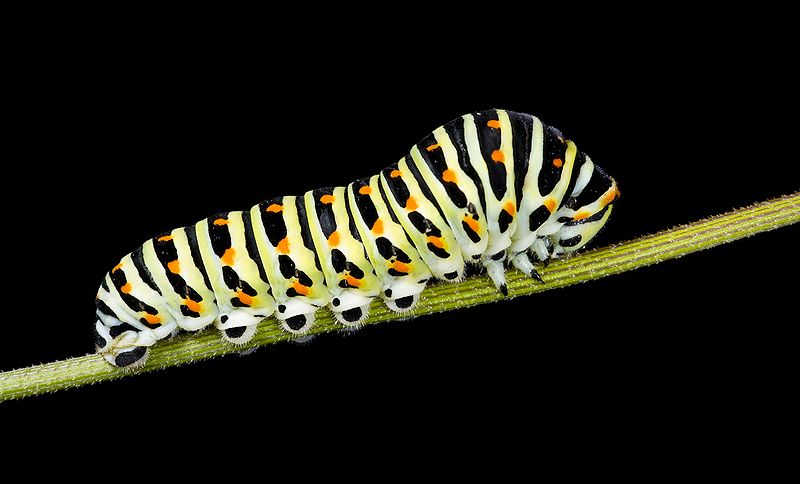
How is it that a caterpillar closes itself in a cocoon, completely dissolves, and then rebuilds itself into a beautiful butterfly without having to make a single change to its DNA code? The answer lies in epigenetics, and scientists are increasingly recognising that this mysterious mechanism is important in the development of cancer, too.
Epigenetic mechanisms provide the basis for the extraordinary complexity and specialisation that occurs in nature that goes well beyond what would be possible simply with a genetic code. But the area is still relatively unknown, and as such, is an untapped research reservoir poised for major discoveries. It holds the potential to revolutionise science, medicine and drug discovery, much like the discovery of the genetic code itself did almost 60 years ago.
Back in 2000, Professor Randy Jirtle and Dr Robert Waterland took pairs of fat, yellow mice called agouti mice, who not only were constantly hungry, but also had a tendency to develop diabetes and cancer. However, Jirtle and Waterland managed to get the agouti mice to produce offspring that were healthy, slender, mousy brown, and appeared to have shaken off their predisposition to developing diabetes or cancer. How was this dramatic transformation achieved without altering a single letter of the mouse’s DNA? Starting before conception, the mother was given a diet rich with methyl donors – small chemical clusters that can attach to a gene and turn it off. The methyl donors worked their way into the developing embryo’s DNA, and attached themselves onto the agouti gene – erasing its negative effects. This simple experiment demonstrates epigenetics in motion. Because a genome can pick up or shed a methyl group much more readily than it can change its DNA sequence, Jirtle says epigenetic inheritance provides a rapid mechanism by which an organism can respond to the environment without having to change its DNA.
So that’s mice, but what about us? Does our lifestyle have a consequence on our children? Professors Marcus Pembrey and Lars Olov Bygen studied records of fluctuations in food supply and health effects in an isolated town in Northern Sweden. At first they found that life expectancy of grandchildren was directly affected by the diet of the grandparents. Fatal childhood diabetes was often associated with a grandfather living during a period of reduced food supply, and was even more marked if the restrictions were at a time of just before puberty for the grandfather, and at the time of conception for the grandmother – crucial moments in the development of sperm and egg. Environmental influences, in this case supply of food, were being imprinted on the DNA of the sperm and egg, providing strong evidence that epigenetic inheritance occurs in humans.
Epigenetic changes are fickle – they are essential in some aspects of nature and can provide survival advantages, but in some cases, changes can lead to detrimental outcomes such as diabetes and cancer. But by understanding epigenetic processes in diseases, scientists can harness this knowledge to predict a patient’s outcome, or even to design new personalised drugs that go beyond targeting a specific DNA sequence.
Recent research here at The Institute of Cancer Research, London, found that increased methylation of four tumour-modulating genes – TGFBI,GPX3, RBP1 and SPARC – was associated with significantly shorter overall survival in patients with multiple myeloma. These genes control important functions including how the tumour responds to chemotherapy in the case of TGFBI, and how the tumour cells react to their local environment. For instance, high expression of TGFBI increases the cell’s sensitivity towards chemotherapy, and silencing this gene through methylation causes resistance to chemotherapy. Myeloma biology usually focuses on DNA changes. But these new findings bring the potential of using methylation, or epigenetic change, as a tool for predicting patient outcome and possibly designing personalised epigenetic drugs targeting the chemical changes rather than the DNA itself.
Epigenetic approaches to therapy are making a rapid progress in drug discovery and this is being reflected in our research in this field. Scientists at the ICR are already working hard to design drugs that target many cancer genes, but there could also be a huge unlocked potential in targeting epigenetic changes. Targeting an enzyme called histone deacetylase (HDAC) has delivered among the most exciting progress in exploiting epigenetics so far. HDAC normally regulates gene expression viamodification of the proteins that package and order DNA, called histones, and two HDAC-inhibiting drugs are already licensed to treat a type of lymphoma. But existing HDAC inhibitors have their downsides, including intolerable side-effects and for one of them the need for injections. CHR-3996 is a next-generation HDAC drug discovered in a collaboration with the ICR and Chroma Therapeutics, and has been designed so it selectively inhibits one type of HDAC enzyme (class I), which the researchers hope will reduce the side-effects associated with existing treatments while retaining its anti-cancer properties. A Phase I trial in patients with a range of advanced cancers has shown that CHR-3996 was active when taken in pill form and that the side-effect profile was favourable. The trial was primarily designed for safety, but one patient’s pancreatic tumours shrunk and nine other patients were shown to have stable disease for at least two months.
So the next time you watch the incredible phenomenon of the caterpillar changing into a beautiful butterfly, just think that process could also hold the secrets to successfully treating cancer.
Image: Didier Descouens / Wikimedia Commons, Creative Commons Attribution-Share Alike 3.0.